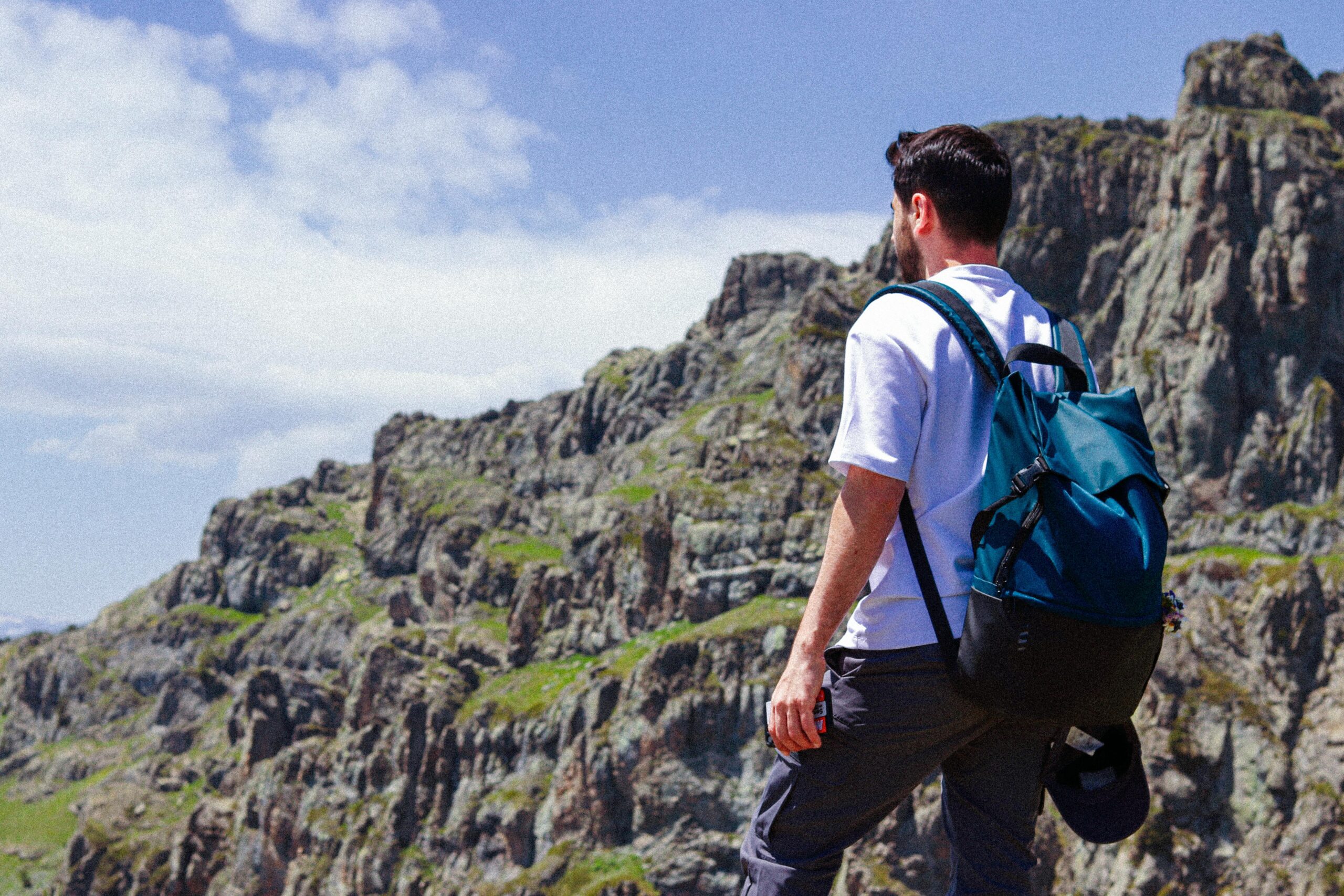Why Choose Eco-Friendly Fashion Backpacks in 2025?
The fashion industry is experiencing a revolutionary shift toward sustainability, and eco-friendly fashion backpacks have emerged as the perfect blend of style and environmental consciousness. With consumers increasingly prioritizing sustainable choices, these innovative backpacks represent more than just a trend—they’re a lifestyle statement that resonates with environmentally-aware individuals seeking both functionality and fashion.
Sustainable backpacks offer compelling advantages that extend far beyond traditional options. They significantly reduce environmental impact while maintaining the aesthetic appeal and durability that modern consumers demand. The materials used in these backpacks often outlast conventional alternatives, providing exceptional value for conscious shoppers.
Top Sustainable Materials Revolutionizing Backpack Design
Recycled Polyester Fiber: The Game-Changer
Recycled polyester fiber has become the cornerstone of sustainable backpack manufacturing. This innovative material transforms plastic bottles and textile waste into durable, weather-resistant fabric that rivals traditional materials in both performance and appearance. Leading brands are incorporating recycled polyester into their designs, creating backpacks that feel luxurious while supporting environmental conservation.
The production process for recycled polyester requires significantly less energy compared to virgin materials. Each backpack made from this material typically incorporates 15-20 recycled plastic bottles, directly contributing to waste reduction efforts while delivering superior durability and water resistance.
Organic Cotton and Hemp: Natural Comfort
Natural fibers like organic cotton and hemp are experiencing unprecedented popularity in sustainable fashion backpacks. These materials offer breathability, softness, and biodegradability that synthetic alternatives cannot match. Hemp, in particular, provides exceptional strength while requiring minimal water and pesticides during cultivation.
Organic cotton backpacks appeal to consumers seeking comfort and natural aesthetics. The material ages beautifully, developing character over time while maintaining structural integrity. Many eco-conscious brands are combining organic cotton with recycled materials to create hybrid fabrics that maximize both sustainability and performance.
Innovative Bio-Based Materials
The future of sustainable backpacks lies in bio-based materials derived from agricultural waste, algae, and other renewable sources. These cutting-edge materials represent the next frontier in eco-friendly backpack design, offering unprecedented sustainability credentials while delivering modern functionality.
Essential Features to Look for in Sustainable Backpacks
Durability and Longevity
Eco-friendly fashion backpacks must excel in durability to justify their environmental benefits. Look for reinforced stitching, quality zippers, and robust hardware that can withstand daily use for years. Premium sustainable backpacks often feature lifetime warranty programs, demonstrating manufacturer confidence in their longevity.
Water-resistant coatings derived from plant-based sources provide weather protection without compromising environmental values. These advanced treatments ensure your belongings stay dry while maintaining the backpack’s sustainable credentials.
Functional Design Elements
Modern sustainable backpacks incorporate thoughtful design features that enhance usability. Multiple compartments, laptop sleeves, and organizational pockets ensure practical functionality without sacrificing style. Ergonomic shoulder straps and padded back panels provide comfort during extended wear.
Many sustainable backpacks feature modular designs that allow customization based on specific needs. This adaptability extends the product’s lifespan by accommodating changing requirements rather than necessitating replacement.
Color Trends and Style Options for 2025
Earth-Inspired Color Palettes
2025’s sustainable backpack trends favor earth-inspired colors that reflect environmental consciousness. Natural tones like sage green, warm terracotta, and ocean blue dominate the color spectrum. These versatile hues complement various outfits while maintaining timeless appeal that transcends seasonal trends.
Soft pink variations, particularly the trending “gentle pink,” offer sophisticated options for fashion-forward consumers. This color provides femininity without overwhelming boldness, making it perfect for professional and casual settings alike.
Minimalist Design Philosophy
Clean lines and minimalist aesthetics define contemporary eco-friendly backpack design. Brands are embracing simplicity, focusing on quality materials and craftsmanship rather than excessive decorative elements. This approach ensures longevity both in terms of style and physical durability.
Popular Brands Leading the Sustainable Revolution
International Sustainability Champions
Leading global brands have committed to sustainable backpack production, with many pledging to use 100% sustainable materials by 2025. These companies invest heavily in research and development to create innovative materials and manufacturing processes that minimize environmental impact.
Premium outdoor brands are incorporating recycled ocean plastic into their designs, directly addressing marine pollution while creating high-performance products. This approach resonates strongly with environmentally conscious consumers willing to invest in quality sustainable alternatives.
Emerging Eco-Friendly Brands
Innovative startups are disrupting the traditional backpack market with creative sustainable solutions. These companies often focus exclusively on environmental responsibility, developing unique materials and manufacturing processes that set new industry standards.
Many emerging brands offer direct-to-consumer models that eliminate intermediary markups while maintaining transparency about their sustainability practices. This approach allows conscious consumers to make informed purchasing decisions while supporting companies aligned with their values.
Care and Maintenance Tips for Sustainable Backpacks
Proper Cleaning Techniques
Maintaining eco-friendly fashion backpacks requires specific care techniques that preserve both the materials and their environmental benefits. Most sustainable materials respond well to gentle hand washing with eco-friendly detergents that don’t compromise the fabric’s integrity.
Avoid harsh chemicals and high-temperature washing that can damage natural fibers and sustainable coatings. Air drying in shade prevents UV damage while maintaining color vibrancy and material strength.
Storage and Protection
Proper storage extends the lifespan of sustainable backpacks significantly. Store them in cool, dry locations away from direct sunlight when not in use. Stuffing backpacks with acid-free tissue helps maintain shape during extended storage periods.
Regular inspection of zippers, straps, and hardware allows early identification of potential issues. Many sustainable backpack brands offer repair services that extend product life rather than requiring replacement.
Investment Value and Long-Term Benefits
Cost-Per-Wear Analysis
While sustainable backpacks often command premium prices, their superior durability and timeless design create exceptional long-term value. Quality sustainable backpacks typically last 5-10 years with proper care, compared to 1-2 years for conventional alternatives.
The cost-per-wear calculation strongly favors sustainable options, particularly when factoring in replacement costs and the emotional satisfaction of supporting environmental causes. Many consumers report increased satisfaction and pride in owning products that align with their values.
Environmental Impact Calculation
Each sustainable backpack purchase contributes measurably to environmental conservation. The average eco-friendly backpack prevents approximately 20 plastic bottles from entering landfills while reducing carbon emissions through efficient manufacturing processes.
| Material Type | Plastic Bottles Recycled | Carbon Footprint Reduction | Water Usage Reduction |
|---|---|---|---|
| Recycled Polyester | 15-20 bottles | 65% less CO2 | 75% less water |
| Organic Cotton | N/A | 30% less CO2 | 90% less pesticides |
| Hemp Blend | N/A | 45% less CO2 | 80% less water |
Frequently Asked Questions
Q: How long do eco-friendly backpacks typically last? A: Quality sustainable backpacks typically last 5-10 years with proper care, significantly longer than conventional alternatives. The durable materials and superior construction methods used in eco-friendly options ensure exceptional longevity.
Q: Are sustainable backpacks more expensive than regular ones? A: While eco-friendly fashion backpacks often have higher upfront costs, their superior durability creates better long-term value. When calculated on a cost-per-wear basis, sustainable options frequently prove more economical than repeatedly replacing cheaper alternatives.
Q: Can sustainable backpacks be as stylish as conventional fashion backpacks? A: Modern sustainable backpacks excel in both style and functionality, often surpassing conventional alternatives in design innovation. Leading sustainable brands collaborate with renowned designers to create products that set fashion trends rather than following them.
Making the Switch to Sustainable Fashion
The transition to eco-friendly backpacks represents a meaningful step toward sustainable living that doesn’t require compromising on style or functionality. As consumer awareness grows and technology advances, sustainable options continue improving while becoming more accessible to diverse market segments.
Choosing sustainable backpacks contributes to positive environmental change while providing personal satisfaction through conscious consumption. The investment in quality sustainable products supports innovation in environmental technology while demonstrating commitment to future generations.
The 2025 landscape for sustainable fashion backpacks offers unprecedented variety, quality, and style options that make environmentally conscious choices easier and more appealing than ever before. Whether prioritizing recycled materials, organic fibers, or innovative bio-based alternatives, today’s consumers can find sustainable backpacks that perfectly match their personal style and functional requirements while supporting environmental conservation efforts.

